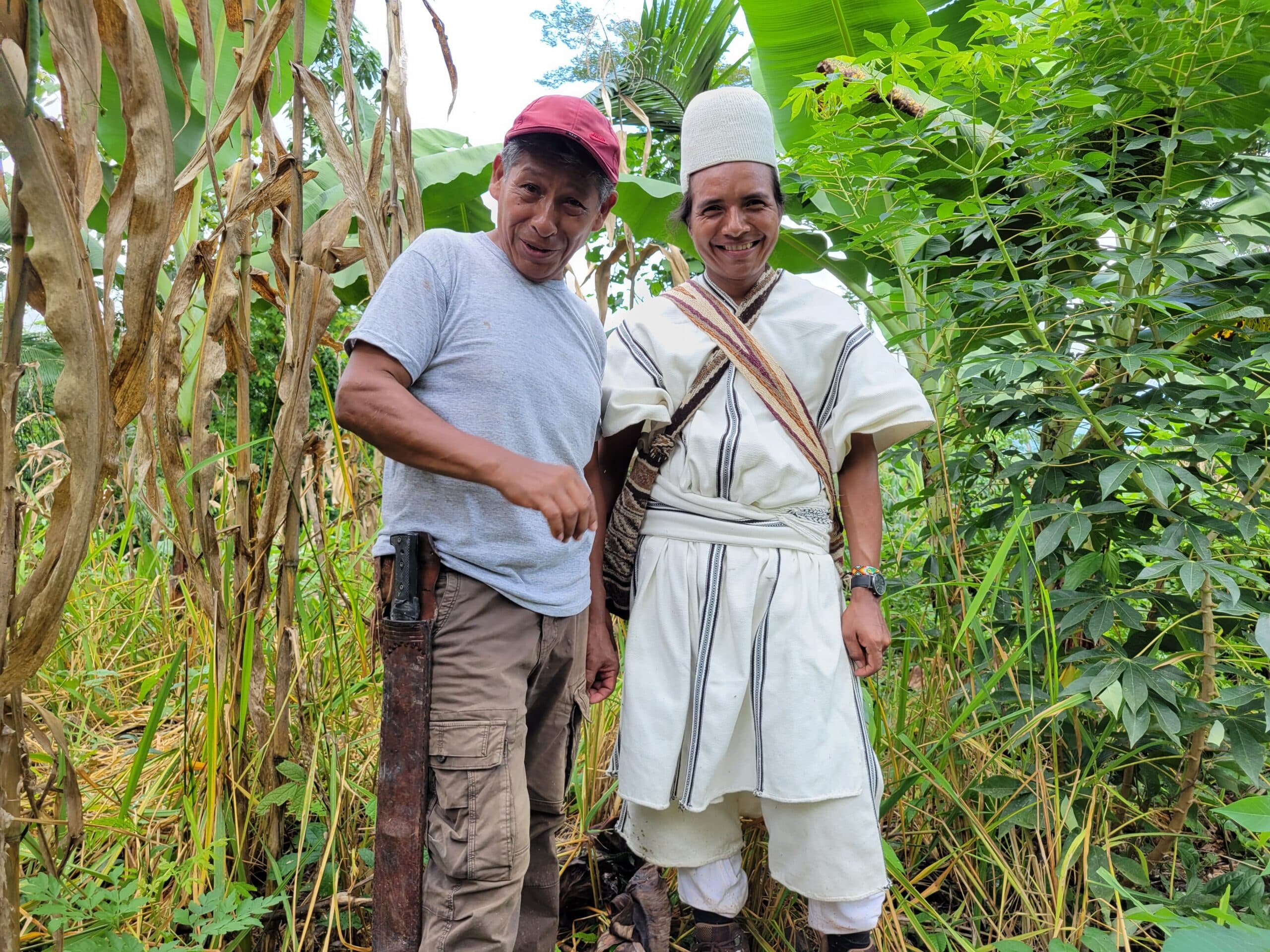What does climate-resilient and regenerative cocoa farming look like? Is it possible to combine biodiversity with maximising economic success? The participants at the EcoTop workshop in Bolivia all agreed that agroforestry is the way forward for cocoa farming!
Jun 26, 2024
We have known since long before the current cocoa crisis that soil health is central to growing healthy, climate-resistant cocoa trees. In the Dominican Republic, our organic cocoa has always been grown in woodland-like agroforestry systems, and very successfully so. Since the start of 2024, the organic cocoa produced by the smallholders in FUNDOPO (Fundación Dominicana de Productores Orgánicos) has also been Regenerative Organic Certified (ROC).
In order specifically to promote the agroforestry approach and spread best practice to other countries, members of FUNDOPO, along with our agroforestry and certification expert Christoph Eisenbeiss, took part in a workshop about dynamic agroforestry farming organised by EcoTop in Bolivia.


Replicating a woodland-like structure
EcoTop’s approach is based on replicating a woodland-like structure with its typical different heights/layers. It is achieved without burning the previously cut bushes and trees. EcoTop pays particular attention to:

“If you plan ahead and give the plants enough space over time, they don’t get in each other’s way. That maximises photosynthesis and yields.”
Luis Walter Lohse, agronomist at EcoTop and the course leader
Intensive land use combined with maximum biodiversity
If the different layers are correctly planned, the plants don’t compete with each other. They all receive enough nutrients and sunlight. Smallholders want to get maximum economic benefit from their land, so EcoTop combines local crops such as citrus fruits, vanilla, cocoa, coffee and fruit trees. They provide valuable additional income.
“To make sure the land is used intensively, it’s really packed with plants. But this is done according to regenerative farming methods that meet the highest standards.”
Christoph Eisenbeiss, certification expert at PRONATEC

Maintenance by the farmers is essential for success
One thing’s for sure: farming in an intensive, regenerative agroforestry system only works if the smallholders are really committed to it. That’s because, without regular pruning, the land turns wild again, it becomes overgrown and the yields fall. Maintenance requires a keen eye and the right skills. However, thanks to fair cocoa prices, this maintenance work does pay off in the long term.


Want to become involved in the project?
Encouraging participation in the courses run by EcoTop, FiBL (Research Institute for Organic Agriculture) and PIAF El Ceibo (Programa de Implementaciones Agro-ecológicas y Forestales) is part of our goal of promoting agroforestry methods. “We’re very pleased when our customers want to be part of the project,” says Christoph Eisenbeiss.

Christoph Eisenbeiss, Head Certifications
“Promoting regenerative organic farming methods is one of PRONATEC’s long-term goals. So we want to attract customers who will invest in these projects and become involved in them.”
Ways for companies to work with us are currently being planned.
The consultancy company EcoTop was set up in the year 2,000 and has established itself as a well-known provider of training courses on sustainable, regenerative farming. The workshop in April 2024 took place at El Ceibo, one of Latin America’s oldest certified organic cooperatives, having been set up in 1977. The participation of the FUNDOPO members was financed by the Helvetas project “Paisajes sostenibles”.


